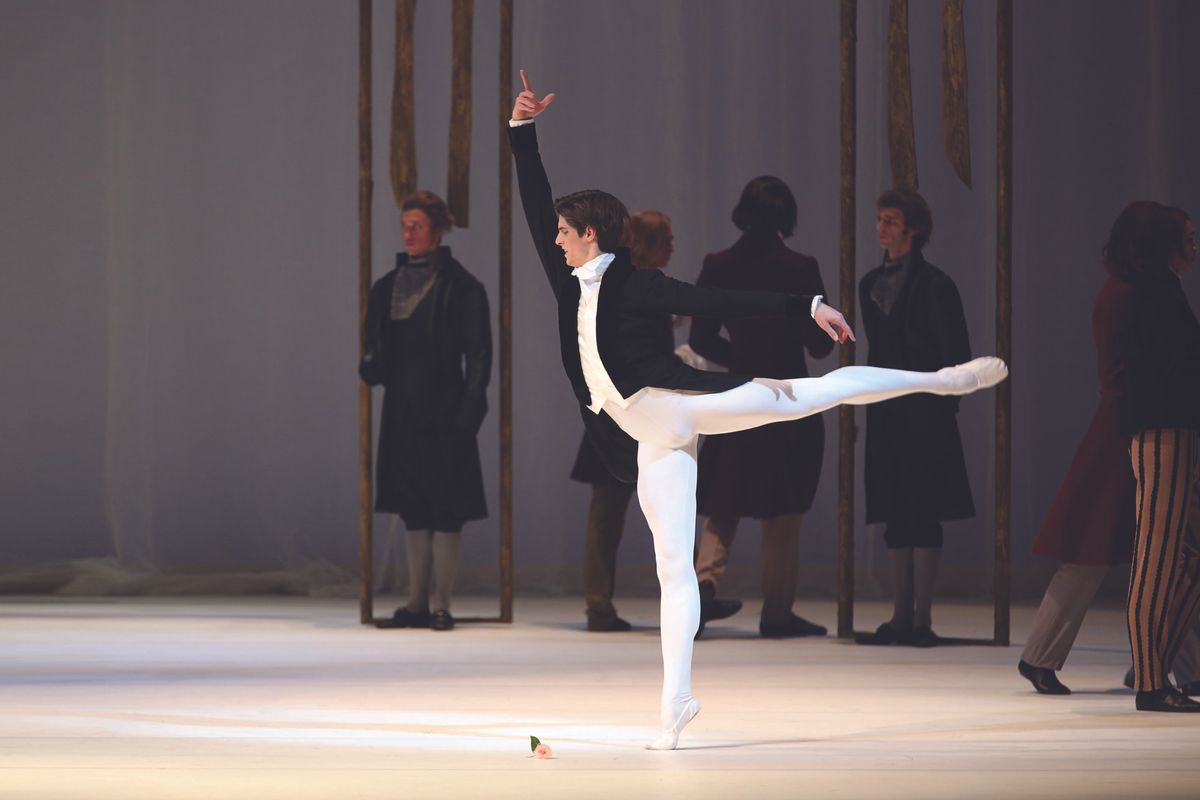5 Training Tips To Help You Nail Your Balances
Finding your balance can sometimes feel like making a new discovery every day. “Emotions play a huge part in balance,” says Alvin Ailey American Dance Theater dancer Belén Indhira Pereyra. “Where is your state of mind that day? Something could be happening in the family world or in the friendship world—or internally. Maybe you ate something unfavorable!” To center herself, Pereyra starts every morning with a meditation that helps her let go of any fatigue or discomfort that could get in her way.
“Balancing is something we are discovering at every moment—partially voluntarily and partially reflexively,” says Irene Dowd, a longtime teacher of dance, kinesthetic anatomy and neuromuscular reeducation at Juilliard and other schools, and author of Taking Root to Fly. “Every part of our body has to be coordinating and responding to one another. As a teacher once said, if you move one cell, every other cell has to move responsively to sustain equilibrium.”
A range of complex brain–body interactions underpin our balance. Our eyes assess our body in relation to the environment we’re in; our vestibular system tracks our motion and head position; and receptors in our skin, muscles, tendons and joint capsules note the position of body parts in relation to each other and to the space around us. All this information is sent to the brain, which then tells our muscles about any postural adjustments we need to make. So how can dancers take advantage of all these systems to improve their balance?
Practice in Low Lighting

Photo by Joe Carrotta, Courtesy NYU
The light-filled dance studios where we practice and rehearse are perfect for picking up visual cues. But lighting is often reduced in other performance spaces, like dark theaters. Does this make a difference in our stability?
Yes, say Elizabeth Coker, from NYU’s Tisch School of the Arts, and Terry Kaminski, from the biobehavioral sciences department at Teachers College, Columbia University. In a recent study, they asked a group of elite dance students to perform a static balance task and a dynamic balance task in full light with a mirror, in full light without a mirror, and then again in low light.
They found the mirror made no difference on the dancers’ stability or technical form. Under low-light conditions, however, the dancers were less stable and they balanced for a shorter time.
“The motor-skills argument says you should train in the same environment as where you will perform,” says Coker. Since it’s not possible for dancers to always train under stage lights, she suggests working in lower-light conditions from time to time.
Dance With Closed Eyes
Another way to boost your balance is training with your eyes closed, say researchers Kimberly Hutt, of the London Contemporary Dance School, and Emma Redding, of Trinity Laban Conservatoire of Music and Dance. Their study found that dancers improved their dynamic balance by performing dance exercises in class with their eyes shut. Hutt suggests this stimulates a shift from relying on visual stimuli to proprioception, which could improve your balance regardless of visual conditions.
Coker believes the impact on stability might have more to do with building strength. “I would argue that you’re going to be wobblier because your eyes are closed, and therefore you’re going to have to create all these little motor movements so that you don’t fall over,” she says. This trains intrinsic-muscle strength, a major component of balance.
Add Visual Randomness
In balance research, scientists often apply visual “perturbations” to try to disrupt visual dependence—the idea being that a really accomplished balancer can develop strategies to stay in equilibrium even in a busy environment.
In the studio, you could create this by working in groups, with one group practicing balances while another group (in their field of vision) moves across the floor, Coker says. Training this way also gives dancers an opportunity to focus on the other bodies in the space, mimicking what they have to do onstage.
Try Less Predictable Choreography
While dancers’ dynamic balance was improved during predictable choreography in Hutt and Redding’s study on eyes-closed training, when they randomized the step sequence, the dancers struggled. Perhaps teachers should be giving less predictable sequences in class, says Hutt, to challenge balance mechanisms and improve performance.
Dowd says studying different styles might accomplish this too: “If you have been a ballet dancer all your life and you investigate the practice of bharatanatyam, your equilibrium and physical fitness will be challenged right away!”
Dancers are always given challenges, but it’s good to create even more, Dowd adds. “Even just by sequencing differently, like changing the direction of your ronds de jambe if you are used to doing them a particular way. Or changing the speed or doing things in a different order in class. There are all kinds of ways in which you can create micro challenges.”
Find Your Own Equilibrium
Dancers have a risky job and their ability to balance in various environments as well as in different physical and mental states is crucial. “We are constantly balancing the forces acting on our body, arising from within ourselves and from the environment outside, and all these forces are constantly changing,” says Dowd. For Pereyra, making sure she is ready to find her balance each day starts the moment she wakes up. “I consider everything like one long warm-up,” she says. “I am the person that is doing this. There is no separation between me and my dance life. Our job is way too strenuous to detach the two.” Balance is quite literally a balancing act.




